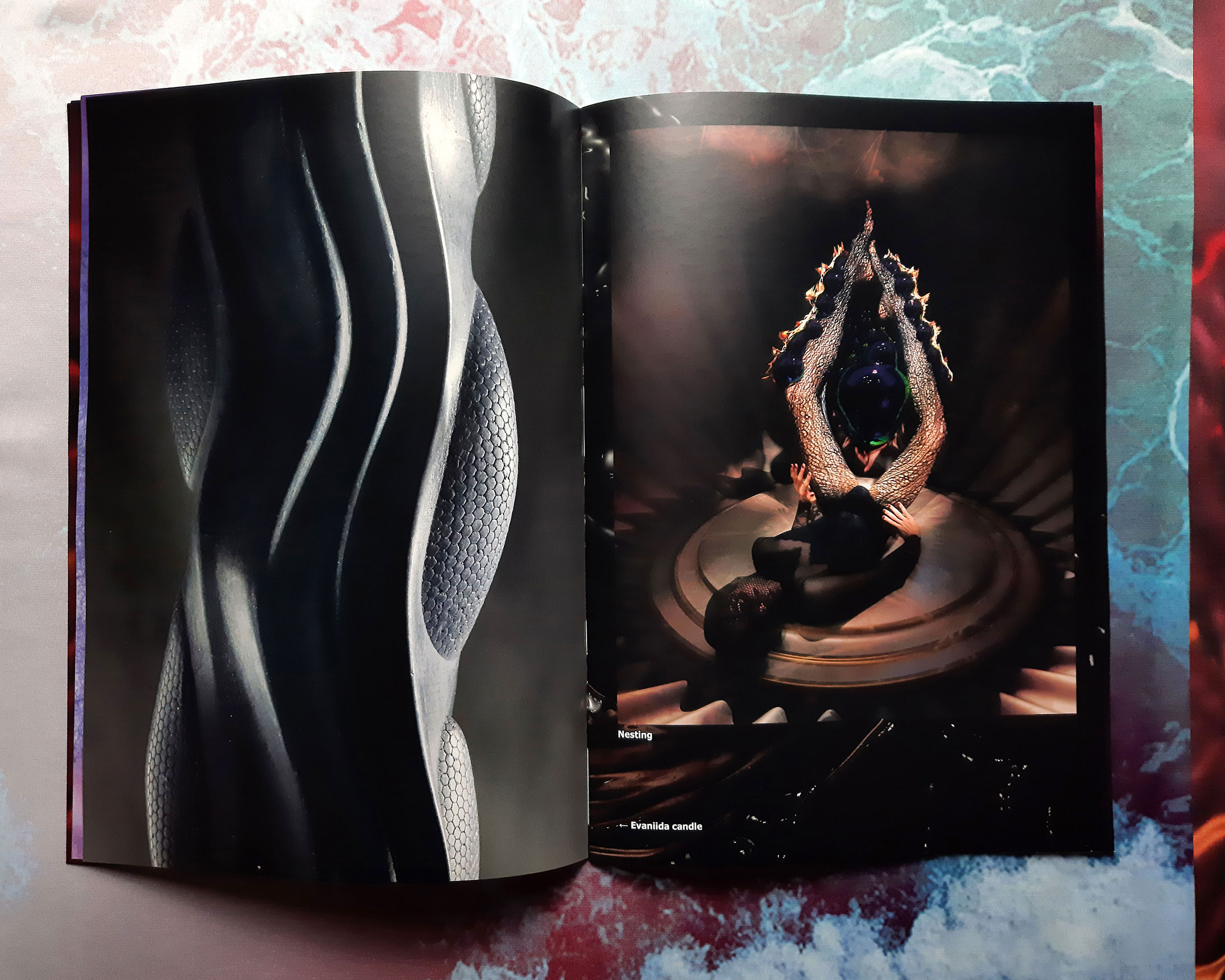Spawning Cycles
Documentation coming soon

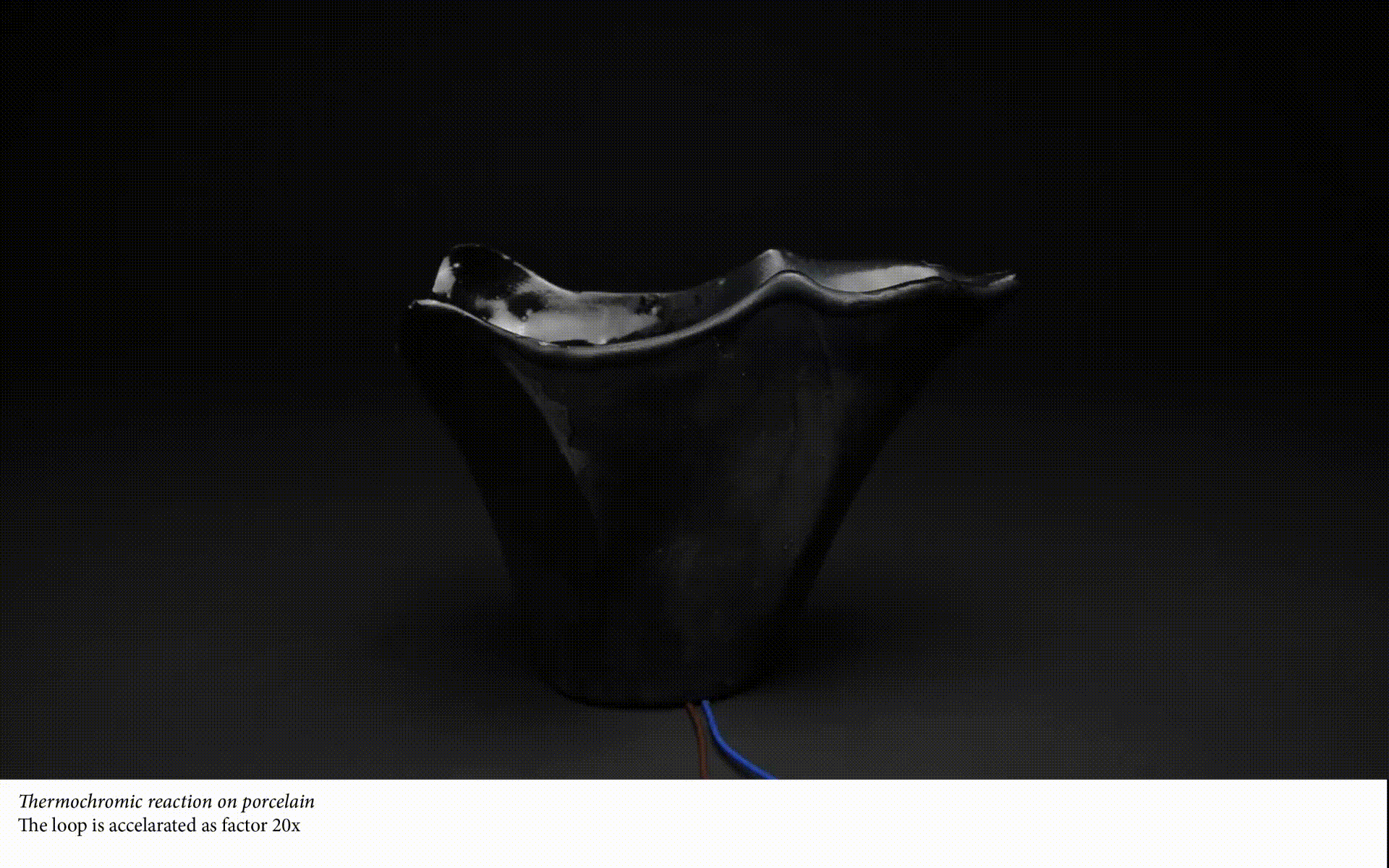
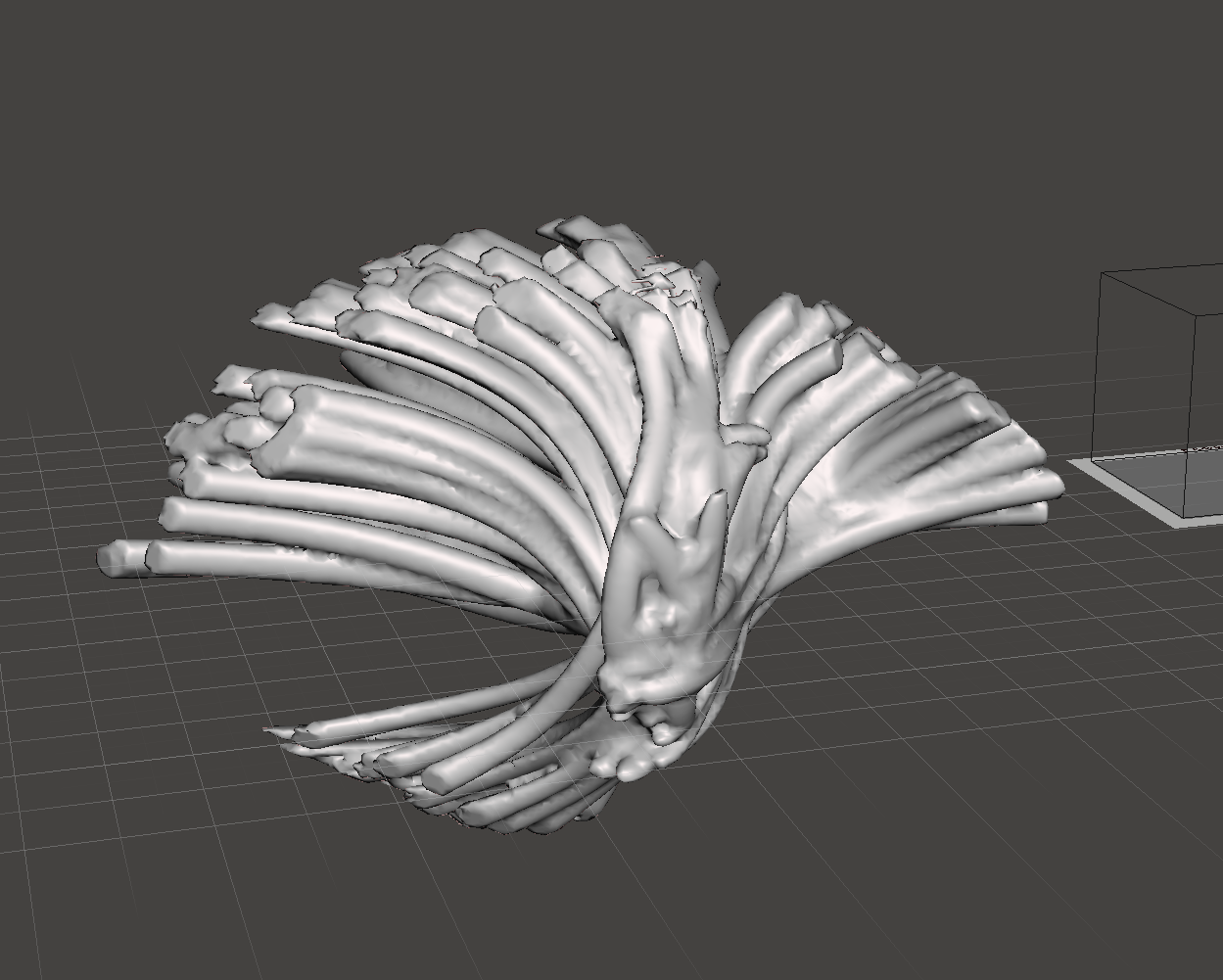
An imaginary garden with real toads in them
Photograhy
Print on adhesive vinyl
and ultra smooth Hahnemühle, dimension variable + laser paper for writing elements
2020-2024*
An imaginary garden with real toads in them is a photography project that re-envisions transness and dysphoria through the lens of interspecies relationships. The series is influenced by the poetics of late modernist
poet Marianne Moore, whose work represents non-human bodies without attempting to wholly capture or dominate them. An imaginary garden similarly conjures transspecies textures, qualities and essences without exploiting animal labour or seeking to replicate scientific ‘accuracy’.
Throughout the series, there is a leitmotif of torso imagery. The human torso is a mythologised, politicised and gendered part of the body; it is a site of struggle concerning sexualisation, breastfeeding, ideals of the ‘right’ kind of torso to fit a binary gendered system, and representation of post-op bodies.
As this project explores, the historical development of body signal sensors for lie detection and surveillance is also rooted in this region of the body. Mixing images of my torso with non-human elements allows me to reclaim dysphoria from pathology, instead exploring possibilities of ‘becoming with’ that challenge queerphobic and humanist notions of the default, or ‘correct’, body.
Adopting a speculative approach, the use of of mix of photography and 3D imagery, virtual fur, 3D collage and other imagined animalistic shapes, An imaginary garden creates a sensual, dreamlike aesthetic of undying queerness and future potential existence. This project transports Moore’s ethics into a contemporary posthuman visual offering, reclaiming the transbody from continuing legacies of control, pathologization and surveillance. It invites viewers of any gender into a space of fantastical embodiment.
*Text description and exhibition text by Ruby Lawrence












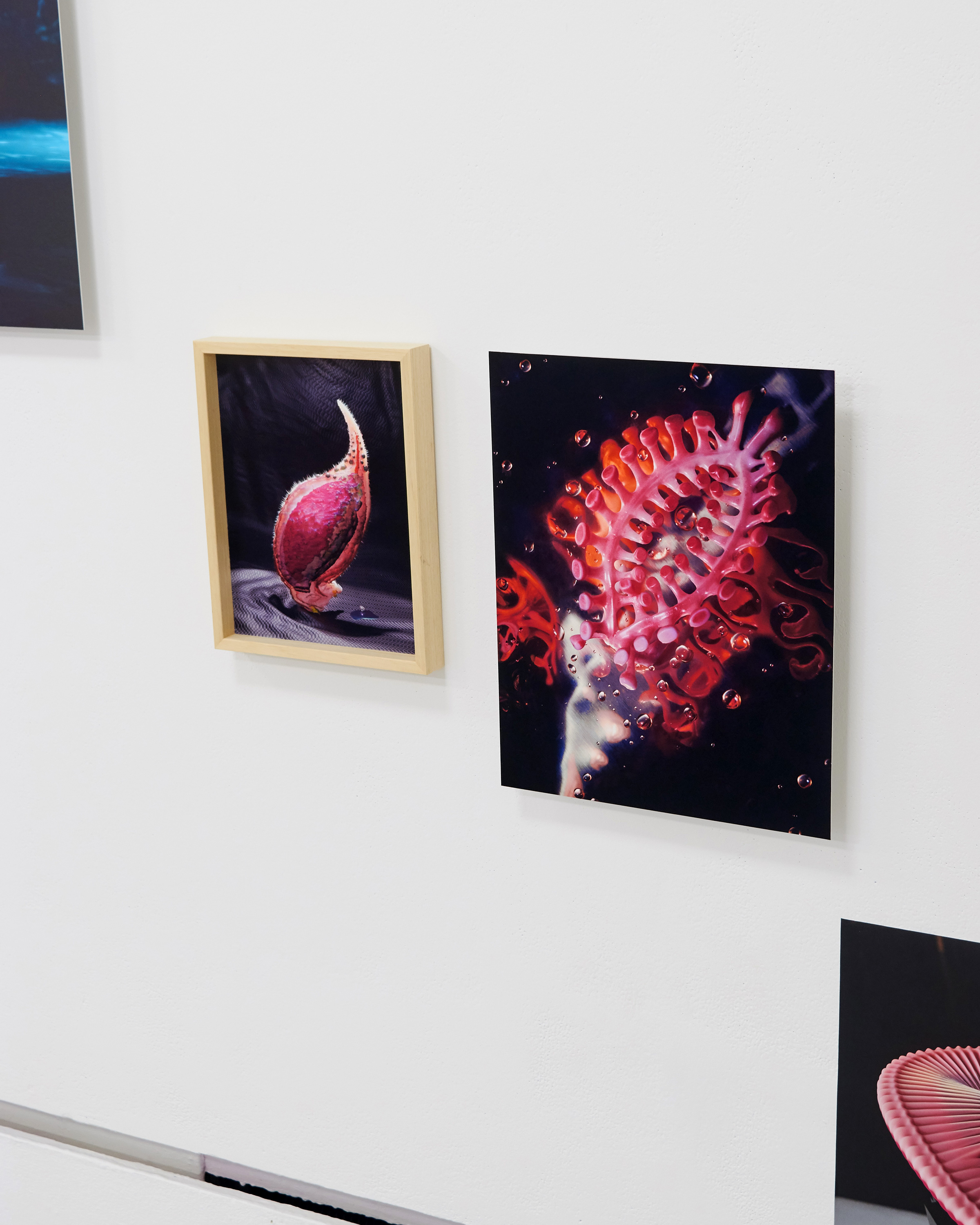


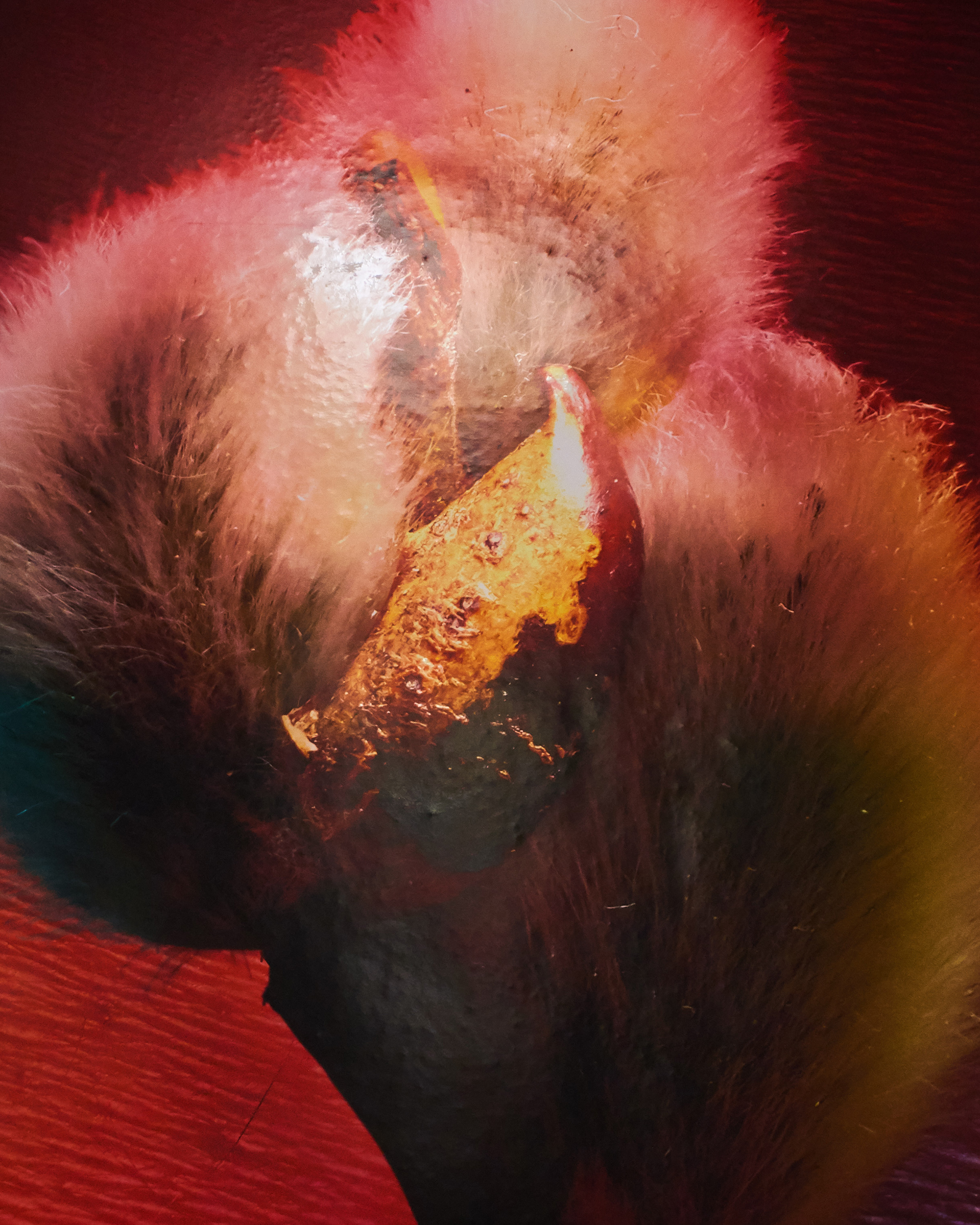
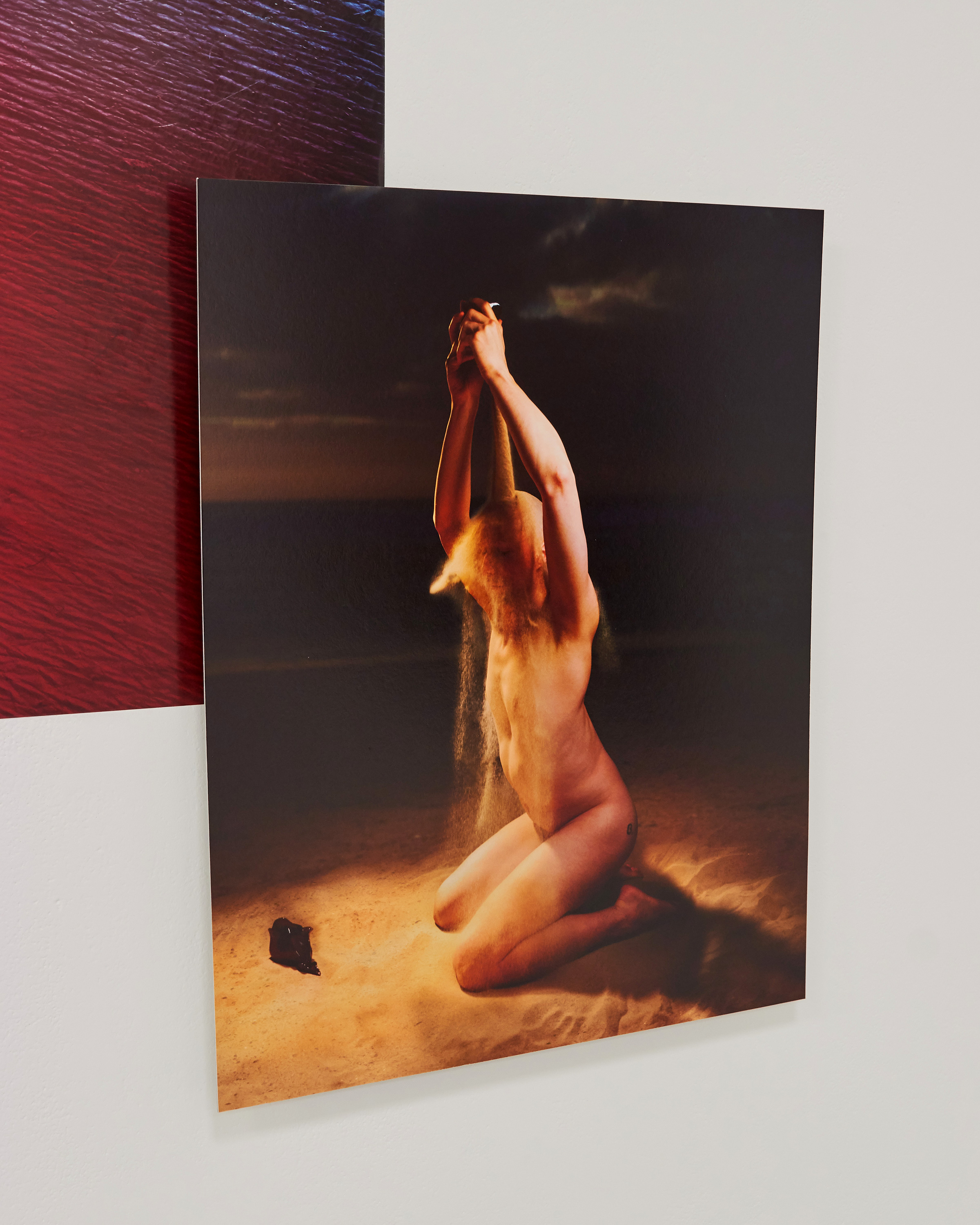

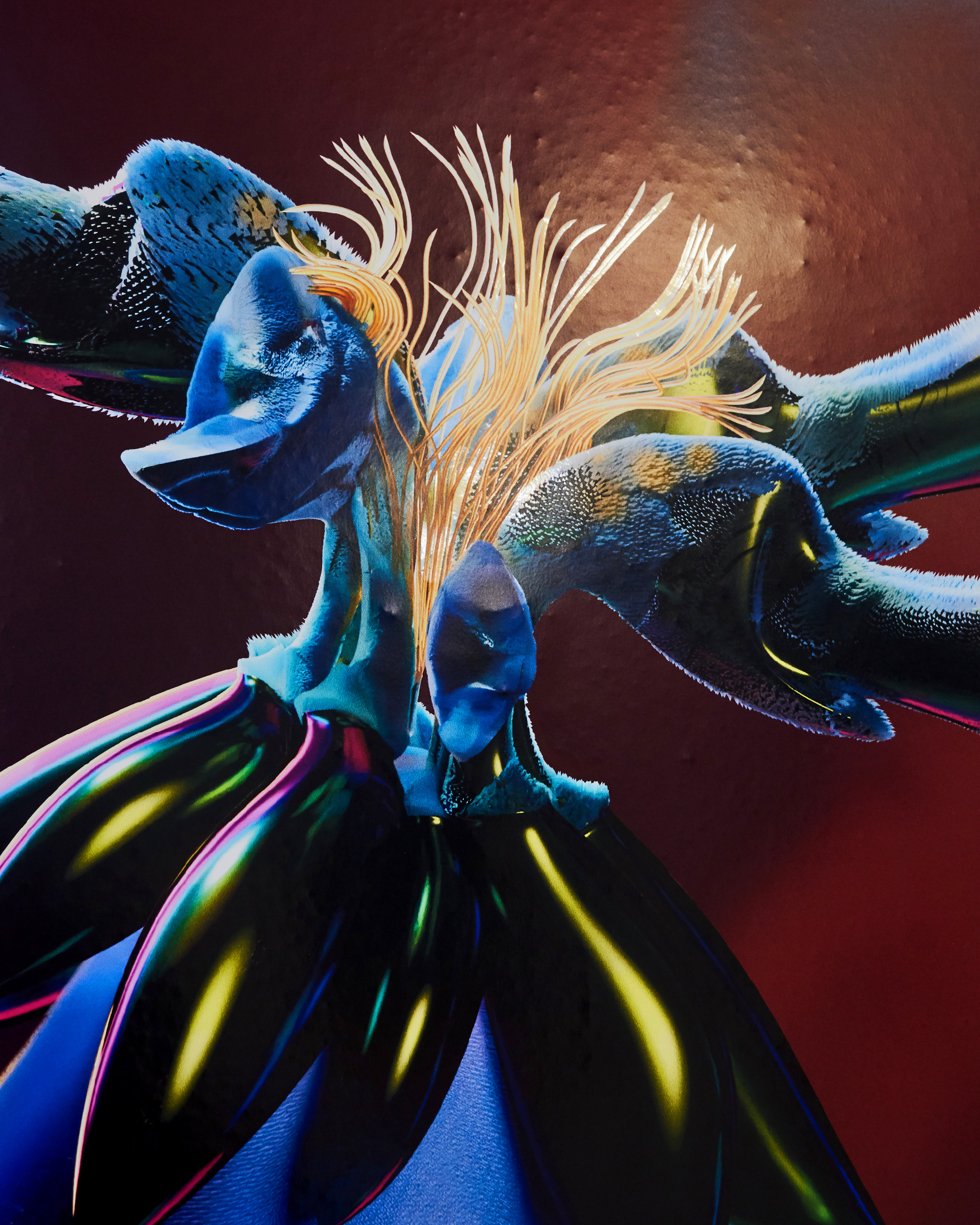



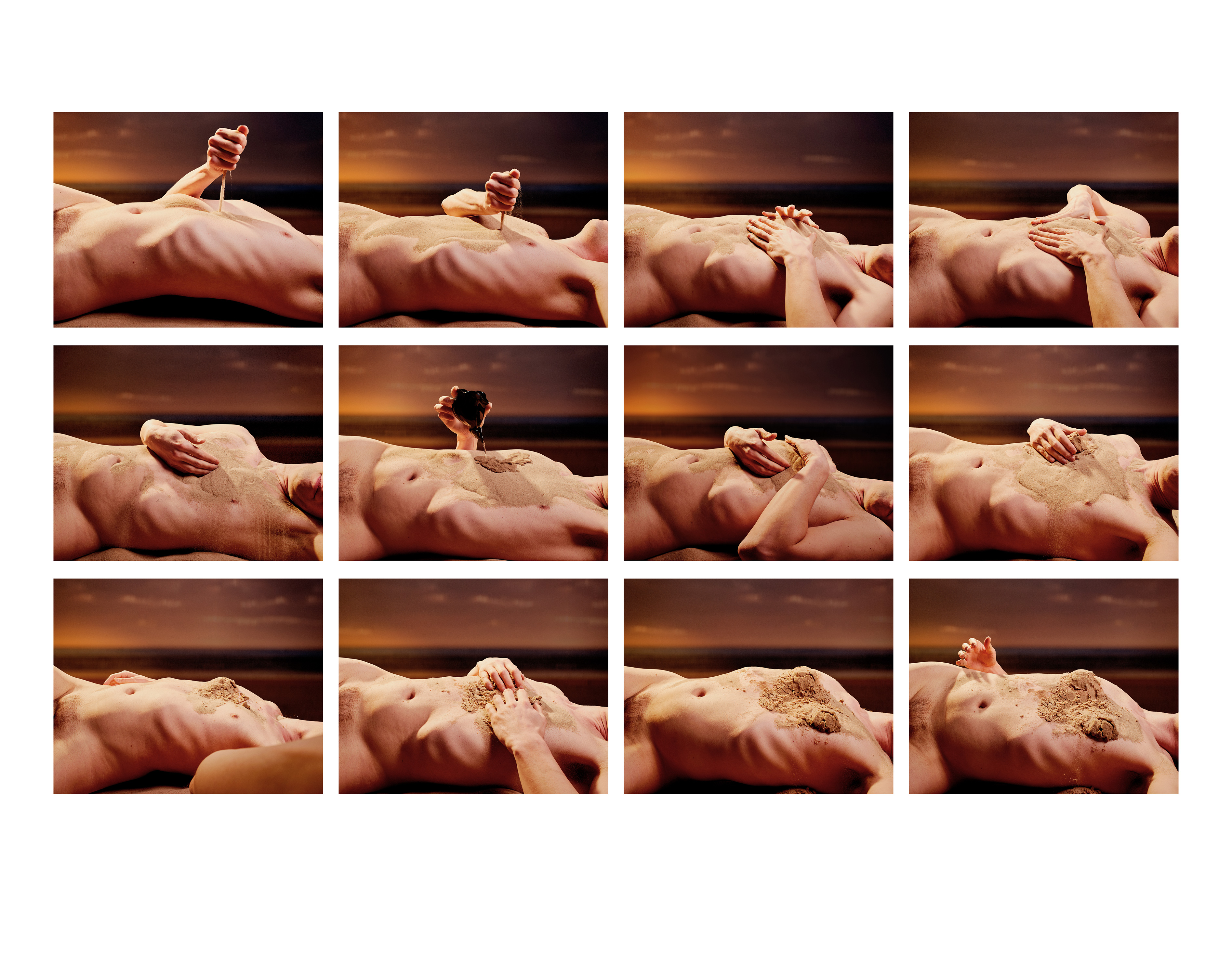



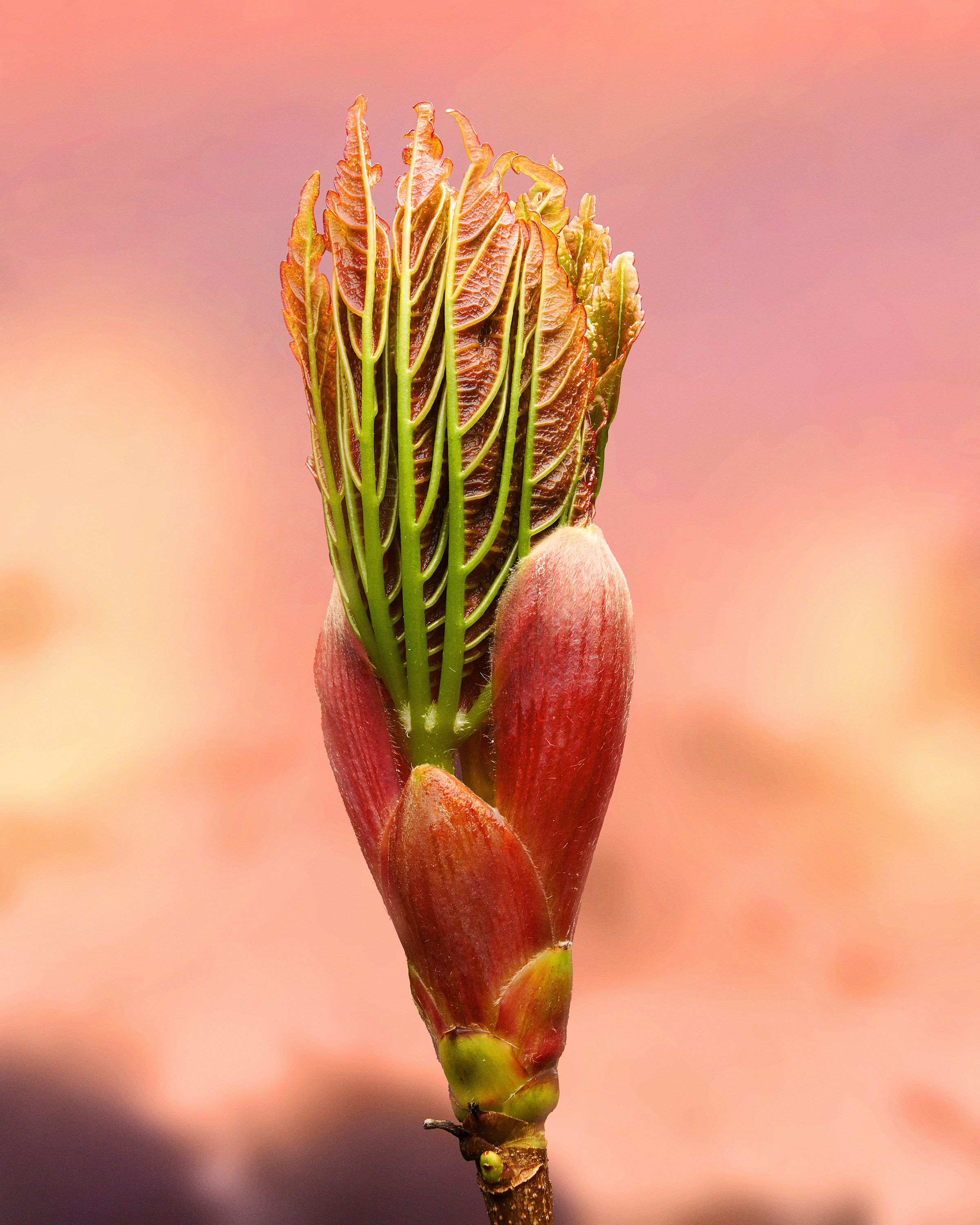




















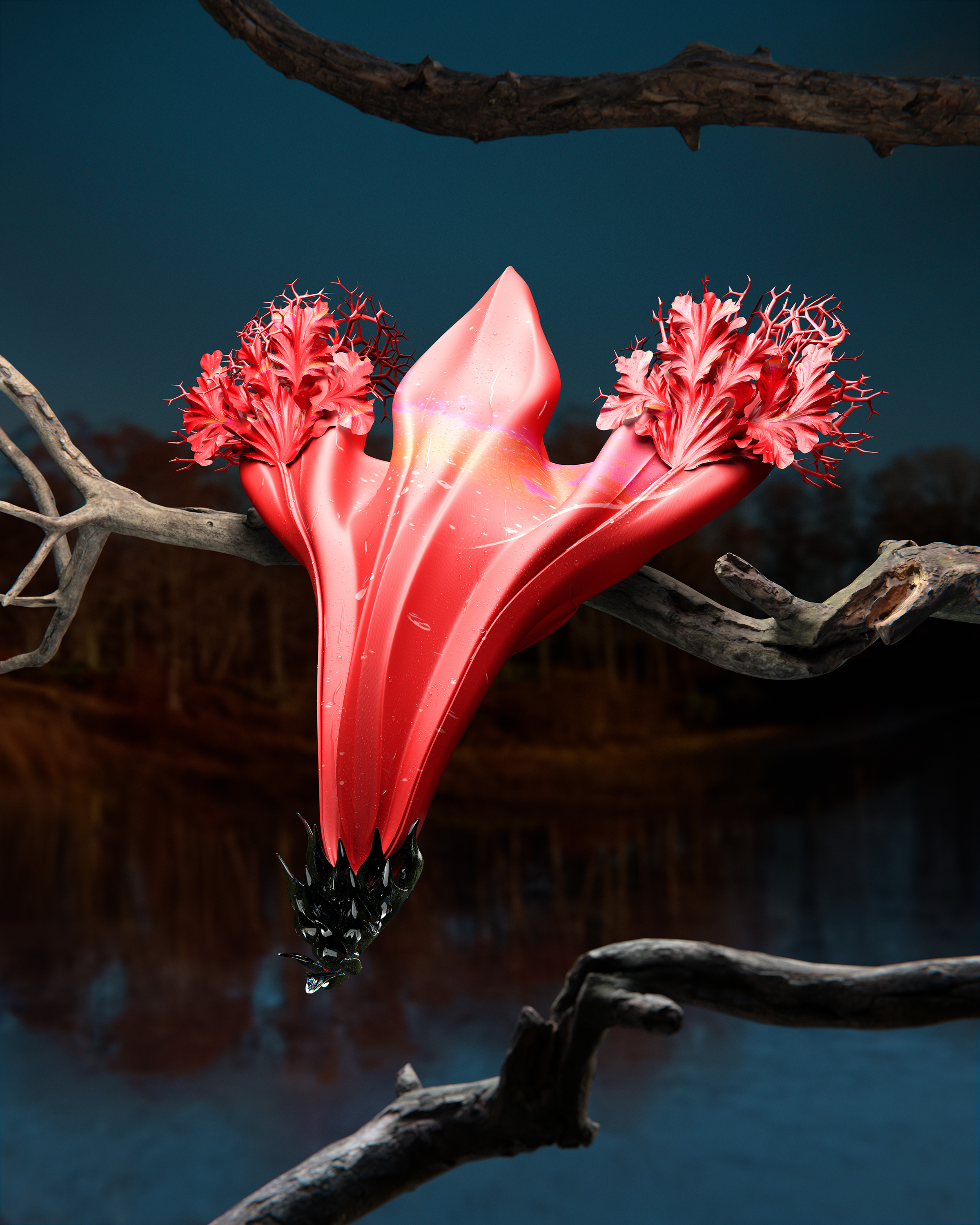


Space Sporification
Durational multi-media performance
2020-2022
This immersive performance invites the audience to explore fluid identities and shared experiences through an interplay of live action, sound, visuals, and biometric response. At the center of this experience is a performer acting as a facilitator, guiding participants through an evolving space animated by personal and collective energies.
The heart of the performance is a virtual “planty-spaceship” projected into the space. This animated entity moves and dances, responding in real time to the average heartbeat of the audience, recorded by wearable sensors named “Herma.” These sensors create an immediate link between individual and collective rhythms, merging the audience's physical signals with the digital movement of the spaceship.
Layered with this visual dynamic are intimate audio recordings: interviews with queer individuals who share insights on their identities through open-ended questions. Each voice offers unique perspectives, from envisioning alternative procreation processes to reimagining queer identities as shapes, objects, or entities. Together, they shape the performance's atmosphere, inviting the audience to feel, listen, and reflect on the diversity of queer experiences
To sustain the fluid, immersive atmosphere, the performer uses a foam machine as a playful, tactile element. This "spreading substance" reinforces the theme of fluidity, echoing the non-fixed nature of both the spaceship’s movement and the narratives heard.
Space Sporification transforms the history of body signal technology — often used for categorization — into a medium of connection. Here, sensors channel communal energies into a shared, inclusive experience, transforming the space into “a techno futuristic café”, an immersive space where queer identities and stories can find renewal, resonance, and belonging.
Interview participants:
Aph, Len, Elina, Eden, Hannah, Axel, Brontë, Harvey, Aga, Fran, Alba, Adam, Clarinda, Alex, Jack, MV and Ruby
Transcription help:
Miranda Stuart
Unity Programming :
Selina Leung (aileenacs)




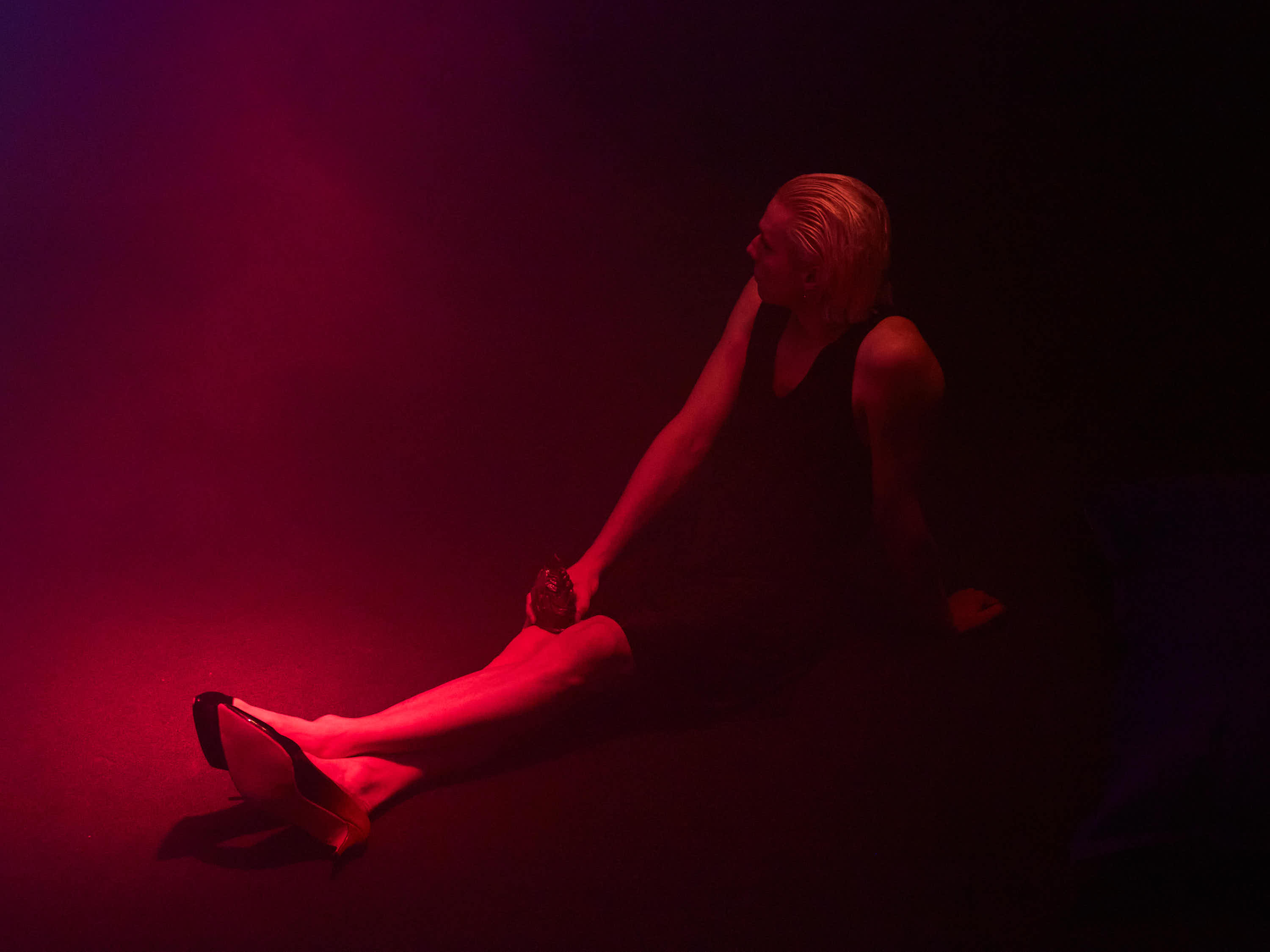

Kunstmuseum St-Gallen, Switzerland
Curated by Martina Morger and Laura Van Der Tas
2021
-
Photography of the performance by mani froh and Fabienne Watzke









Centre for Contemporary Arts, Glasgow
Part of Double Thrills Curated by Buzzcut
2022
-
Partisan x
Dual-channel video
Partisan X juxtaposes two videos: one featuring Joey, a transmasculine individual, and the other showcasing a sculpture revealed and submerged by Venice’s tides. Joey’s portrait emerged from a collaborative, deeply considered process between us, marked by thoughtful discussions about his comfort with his image. During filming, Joey read a poem I wrote about queer liberation, but we ultimately chose to highlight the moments in which he appeared most at peace, embodying a space between rest and waking, dream and reality.
Dual-channel video
2023-2024
Partisan X juxtaposes two videos: one featuring Joey, a transmasculine individual, and the other showcasing a sculpture revealed and submerged by Venice’s tides. Joey’s portrait emerged from a collaborative, deeply considered process between us, marked by thoughtful discussions about his comfort with his image. During filming, Joey read a poem I wrote about queer liberation, but we ultimately chose to highlight the moments in which he appeared most at peace, embodying a space between rest and waking, dream and reality.
In contrast, the Venice sculpture, La Partigiana, designed by Augusto Murer (1922–1985), serves as a monument to the womxn who fought against the Nazis during World War II.
This statue represents the second attempt to commemorate the tenth anniversary of the war’s end.
The original statue, commissioned to sculptor and former partisan Leoncillo Leonardi (1915–1968), was a vivid neo-Cubist ceramic depiction of a fierce and resolute womxn combatant. It was destroyed in 1961 by a neo-fascist group.
Murer's second statue was intended to float, but due to technological limitations and inadequate materials, along with increasing wave motion, it lost this ability almost immediately. The neglect in correcting this error, alongside the depiction of a woman bound by ropes, reflects a shift in perception—from warriors to martyrs. This imagery also evokes historical methods of persecution against womxn, such as drowning or binding to a wheel.
By collating these two images, Partisan X explores authenticity and agency in portraiture over time. By prioritising trust and comfort, the project challenges tokenization, inviting viewers to reconsider how we frame and honour each other’s stories across decades and centuries.
Evaniida +To the alien worm lover I fantasize about.
Book, prints & design objects
2020-2023*
Evaniida is a series of sensual objects including wax play candles, pouring wax cups and non-human strap-on belts. The project is collected in a book of photographs called To the alien worm lover I fantasize about. which contains a text Lipoma- Sting pregnancy featuring an alien character from Octavia Butler’s Bloodchild. Bloodchild is one of the first well-known texts to contain an AMAB and transpecies pregnancy story.
The project was first developed as a self-grounding tool in response to the Covid pandemic, which for many people resulted in a lack of bodily intimacy, corresponding with increased time interacting digitally/virtually.
The project was par of the show “FOR ADULTS ONLY”, curated by Club Kin.X at Transmission Gallery, Glasgow, 2023
A shop is available on bigcartel where you can
objects & book :
adoreadore.bigcartel.com






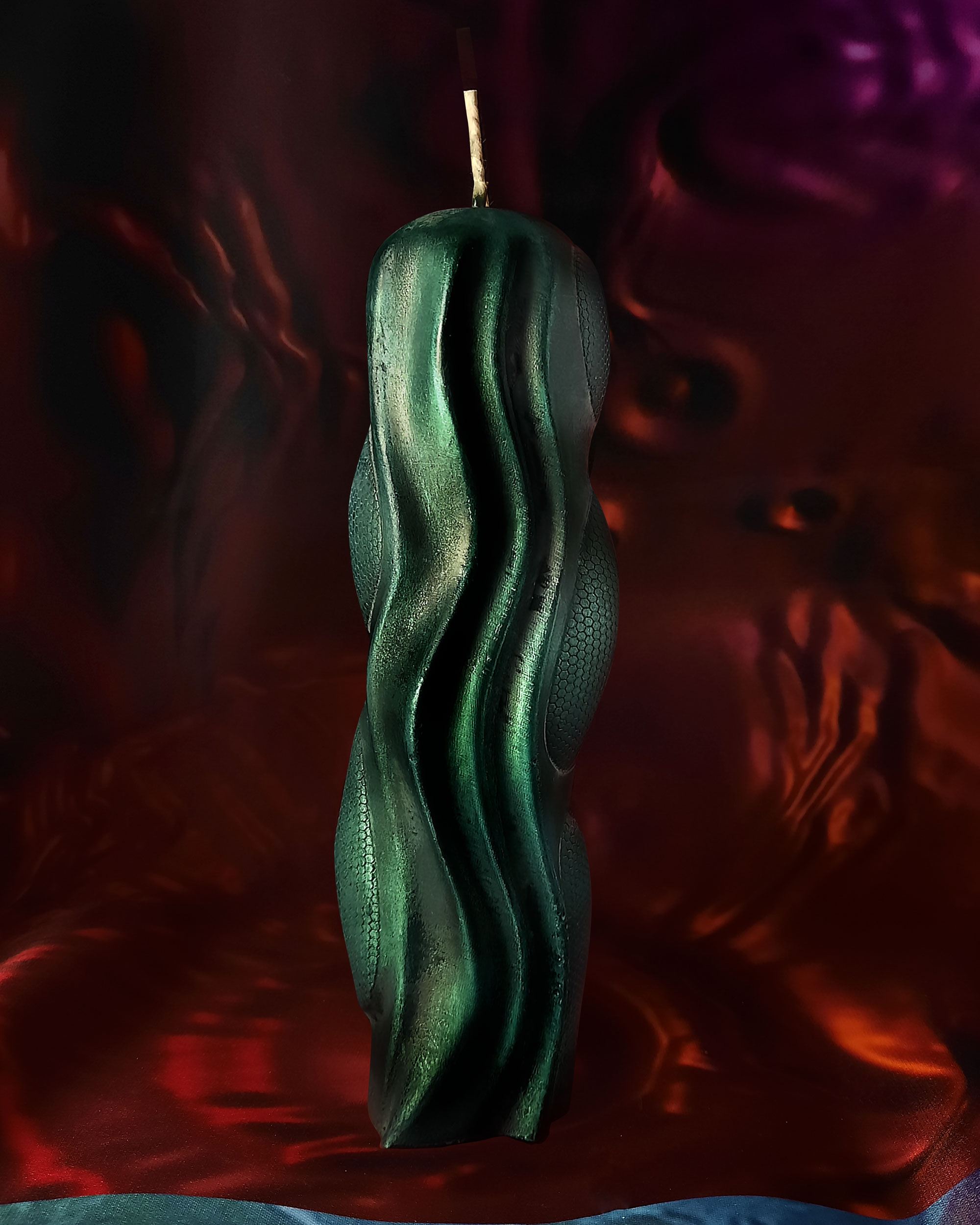

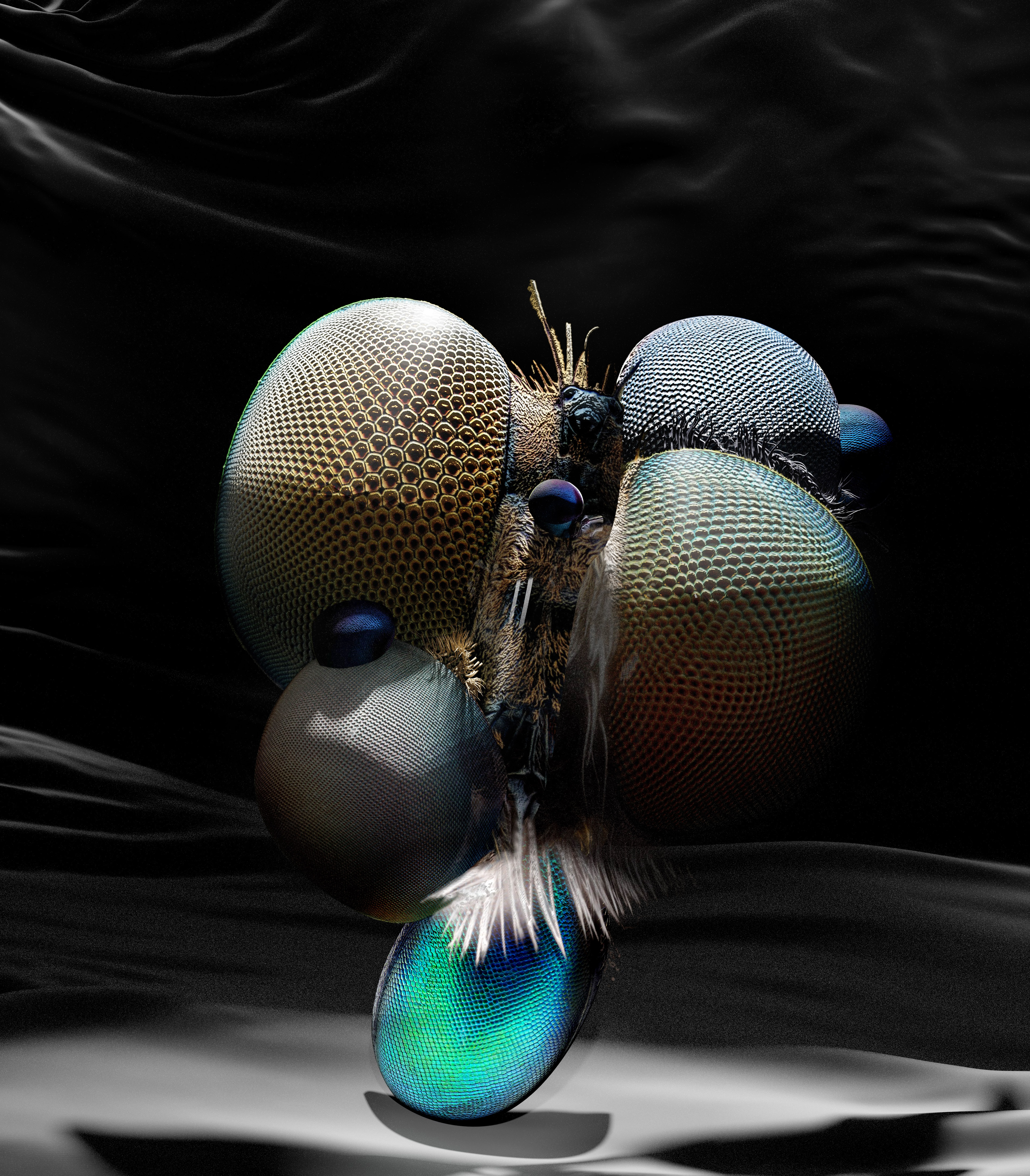









Photographs on C-Print, 90x72cm each
Part of the show “FOR ADULTS ONLY”, curated by Club Kin.X at Transmission Gallery, Glasgow
2023





